The entire universe is inside you. The moon, the stars, and the spinning galaxies.
Rumi
Introduction
The universe is a living expression of interconnectedness, where every element reflects the sacred essence of existence. This blog entry explores the concept of immanence—the divine presence manifest within all aspects of reality—and how it reveals itself through the patterns, cycles, and transformations that shape our world.
Immanence invites us to see the sacred not as distant or abstract but as intimately woven into the fabric of life. In every form and flow, from the smallest particle to the vast cosmos, the divine is present, guiding the processes of creation, dissolution, and renewal. By embracing this understanding, we can perceive life as a continuous journey of becoming, rooted in both the here and now and the infinite beyond.
Circularity, a fundamental principle of existence, highlights the rhythms and cycles through which immanence manifests. From the spiraling galaxies to the patterns of personal growth, life unfolds in a dynamic interplay of connection and transformation, offering infinite opportunities to engage with the sacred and evolve.
Through this lens, we discover that the divine is not confined to moments of balance or clarity but is present in every aspect of existence. Immanence calls us to recognize this sacredness in ourselves, in others, and in the world around us, inspiring a deeper engagement with the interconnected web of life.
As Above, So Below
The phrase “As above, so below” reflects the idea that similar patterns and structures can be found both in the vast cosmos and in the small-scale structures of nature. Here are some compelling examples that illustrate this principle:
The Cosmic Web and Neural Networks
The structure of the cosmic web, which consists of vast networks of galaxies connected by filaments of dark matter, closely resembles the neural networks in the human brain. Both structures feature nodes (galaxies and neurons) connected by filaments (dark matter and axons), exhibiting similar patterns despite their vastly different scales.
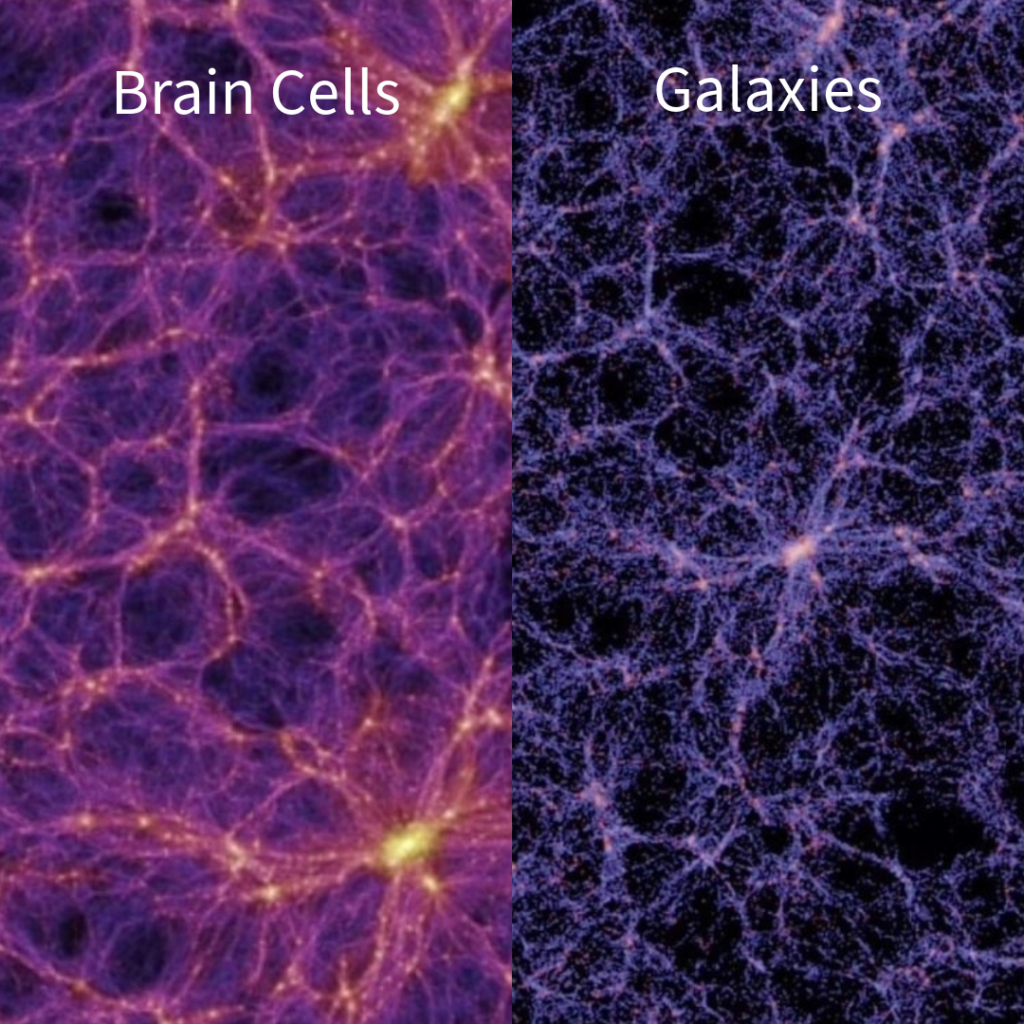
Sources:
https://www.frontiersin.org/journals/physics/articles/10.3389/fphy.2020.525731/full
https://phys.org/news/2020-11-human-brain-resemble-universe.html
Spiral Patterns
Spiral patterns are ubiquitous in nature, from the swirling arms of spiral galaxies to the shells of nautilus sea creatures and the arrangement of seeds in sunflowers. These patterns follow mathematical principles, such as the Fibonacci sequence, and illustrate how similar forms can manifest across different scales.
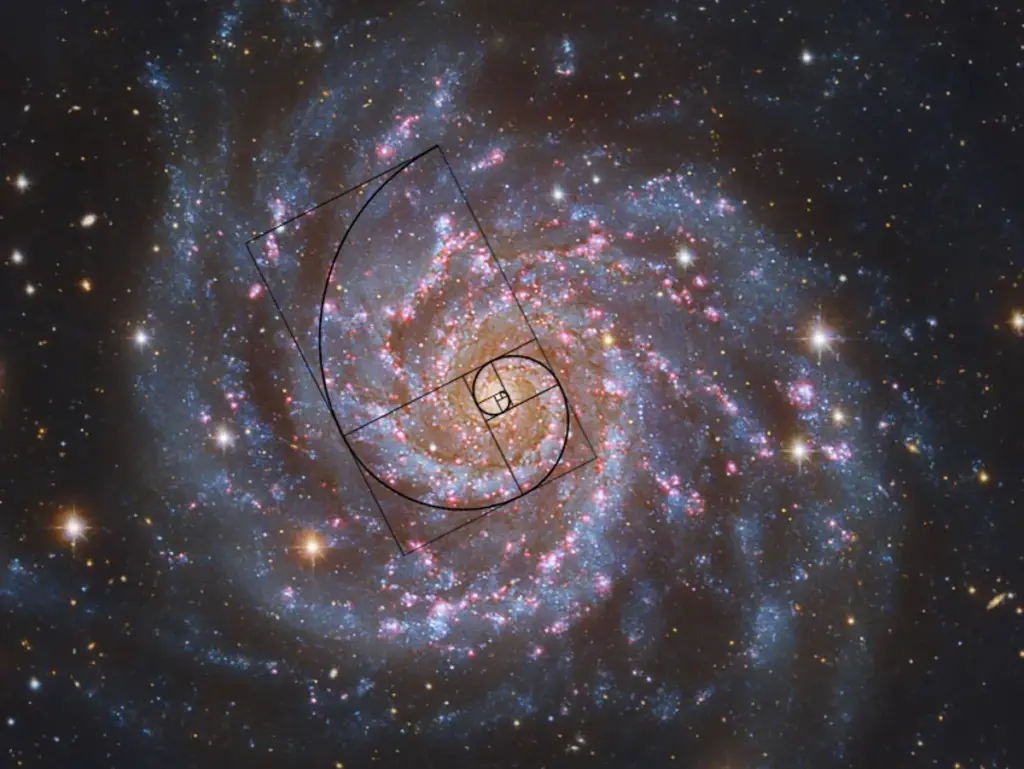
Examples:
-
- Spiral Galaxies: Like the Milky Way, which has spiral arms extending from its core.
-
- Nautilus Shells: The logarithmic spiral found in these sea shells.
-
- Sunflower Heads: The spiral arrangement of seeds, following the Fibonacci sequence.
Sources:
https://www.robertharding.com/blog/2014/01/27/spirals-in-nature
Fractal Geometry in Nature
Fractals are self-similar patterns that look the same at different scales. Examples of fractal patterns in nature include:
-
- Fern Leaves: Each frond of a fern displays a smaller version of the whole leaf’s structure.
-
- Romanesco Broccoli: The vegetable’s surface consists of spiraling, self-replicating patterns.
Sources:
Wikipedia on Fractals in Nature
River Networks and Blood Vessels
Both river networks and blood vessels branch out in similar hierarchical patterns to maximize flow efficiency. This branching pattern is optimized for transporting fluids across large and small scales.
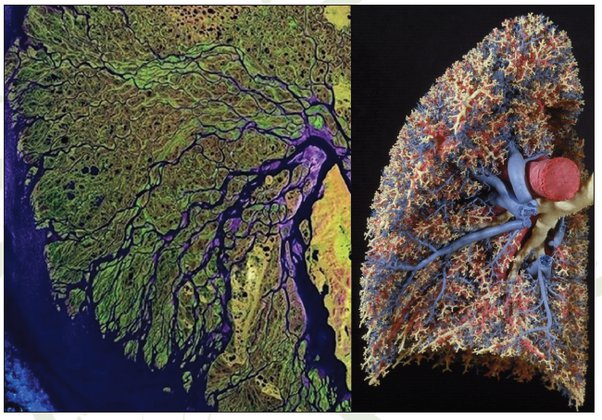
Lightning and Tree Branches
The branching patterns of lightning bolts are remarkably similar to the way tree branches and roots grow. Both follow a path of least resistance and optimize for spreading across a surface or volume.
These examples illustrate the profound interconnectedness of the universe, where similar patterns and structures recur across vastly different scales. This principle not only highlights the beauty and harmony in nature but also deepens our understanding of the fundamental laws that govern the cosmos.
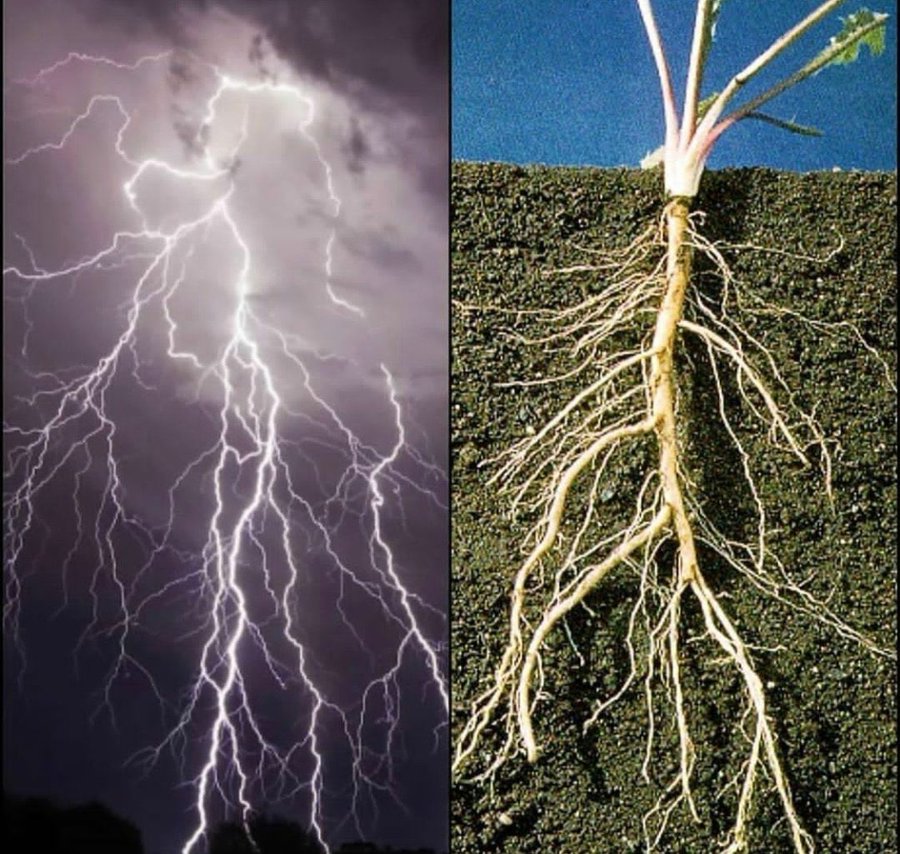
Circular Patterns
Circular patterns are often hard to spot, especially when they unfold over long periods or on a large scale, and we are within them. Our perception of time as linear, with a binary concept of beginning and end, makes it challenging to connect the dots. We often find ourselves in similar situations despite believing we are moving forward. This highlights the limitation of binary thinking when applied to circular patterns. However, a quick look around reveals that circularity is fundamental in nature, observable in both vast systems and minute ones alike.
Continuous Transformation and the Place of Circularity
Continuous Transformation
Continuous transformation is the idea that everything in existence is in a state of constant change and becoming. Central to the philosophy of Deleuze and Guattari, it challenges fixed identities and static states, proposing a dynamic and fluid reality. Nature, personal growth, and societal change exemplify perpetual transformation.
Place of Circularity:
-
- Definition: The “place of circularity” refers to the understanding that transformations are not linear but cyclical. This means that rather than progressing in a straight line from one point to another, changes occur in cycles, reflecting the natural rhythms of life.
-
- Philosophical Roots: This idea counters the linear perspective often imposed by Western thought, which views time and progress as a straight path. Instead, it aligns with many indigenous and Eastern philosophies that see time and existence as a series of interconnected cycles.
Implications of Continuous Transformation and Circularity:
-
- Non-linearity: This perspective encourages us to see growth and progress not as linear achievements but as part of ongoing cycles. Each end is a new beginning, and each transformation is part of a larger, repeating pattern.
-
- Holistic View: Recognizing circularity allows us to adopt a more holistic view of existence. It emphasizes interconnectedness and the importance of each part of the cycle in maintaining the balance and flow of life.
-
- Resilience and Adaptation: Understanding continuous transformation and circularity can foster resilience and adaptability, as we learn to flow with changes and see challenges as part of a larger, cyclical process rather than permanent obstacles.
Applications in Personal and Societal Contexts:
-
- Personal Growth: Embracing continuous transformation and circularity in personal development means recognizing that setbacks and regressions are natural parts of growth. It encourages a more compassionate and patient approach to self-improvement.
-
- Societal Change: In societal contexts, this perspective can inform policies and practices that are flexible, sustainable, and resilient. It supports systems that adapt to changing circumstances and view progress as a cyclical, inclusive process.

Immanence & Universe: The Sacred Within All Things
Immanence lies at the heart of understanding the universe and our place within it, reflecting the divine presence actively transforming potentiality into reality. It represents the divine presence that actively shapes and manifests reality, a sacred essence dynamically woven into the fabric of existence. Unlike a distant, external force, the divine in immanence is always present, always here—both within us and within the world around us.
As Rumi eloquently puts it:
The universe is not outside of you. Look inside yourself; everything that you want, you already are.
Rumi
This perspective transforms how we view ourselves and the world, inviting us to recognize the sacredness within every moment, being, and experience.
Immanence: The Divine as Present Reality
Immanence reflects the sacred as an active, living presence within the universe. It is not something beyond reach or external to us but an inseparable aspect of existence. The divine looks at us from within, expressing itself through the interconnected web of life, nature, and consciousness.
Consciousness sleeps in minerals, dreams in plants, wakes up in animals, and becomes self-aware in humans.
Rumi
In this framework, reality becomes a plane of immanence—a boundless field of manifestation where every action, thought, and interaction reveals a fragment of the divine. Immanence invites us to engage fully with life, finding the sacred in both the ordinary and the extraordinary.
The Universe as Manifestation and Duality
At its core, the universe as understood through immanence is a realm of manifestation—the sacred expressed in forms, flows, and interactions. Immanence reveals the divine as an active presence within the observable and tangible, where the interconnected web of existence comes alive.
However, this manifestation operates within a field of duality: light and shadow, creation and destruction, joy and sorrow, where these oppositions generate a creative tension that drives transformation and growth. These dualities reflect the dynamic, ever-changing nature of life, where oppositions fuel growth and transformation. Immanence embraces these contrasts, showing that harmony is not the absence of tension but the dynamic integration of opposites. Tension fuels transformation, and harmony emerges through the process, as both coexist in the sacred dance of life.
This interplay of dualities invites us to recognize that immanence is not static but a continuous process of becoming, where the divine is experienced in the ongoing act of creation, dissolution, and renewal. While transcendence holds the unmanifested potential, immanence brings that potential into form, revealing the sacred in every moment of life.
Circularity and Transformation
Life operates within cycles of change and renewal, guided by the principle of circularity. Immanence teaches us that growth and transformation are continuous processes, not fixed endpoints. By embracing this dynamic nature, we learn to navigate life’s challenges and opportunities with greater resilience and adaptability.
Circularity also reveals the interconnectedness of all things: the past shapes the present, the present shapes the future, and all converge in the eternal now. This cyclical nature mirrors the flow of immanence, where the sacred is both the seed and the fruit of existence.
Immanence and Transcendence: A Non-Dual Relationship
While immanence grounds us in the sacred within, it also points toward transcendence—the infinite, unmanifest aspect of the divine. These two concepts are not opposites but complementary forces that enrich one another. Immanence reveals the divine in what is manifest, while transcendence invites us to explore the infinite potential beyond.
The interplay between immanence and transcendence is the key to understanding the non-dual nature of reality. Together, they reflect the divine’s unity, reminding us that the sacred encompasses both the seen and the unseen, the finite and the infinite.
Rejecting Judgment: Embracing Life’s Fluidity
Immanence challenges us to move beyond rigid judgments and embrace the fluid, dynamic nature of existence. By recognizing the divine in every moment and every being, we cultivate a compassionate perspective that honors life’s complexity and interconnectedness.
This perspective invites us to engage with life as an unfolding process rather than a series of fixed assessments. It reminds us that every event, no matter how challenging, carries the potential for growth and transformation.
Conclusion
Immanence calls us to see the sacred within ourselves and the universe, transforming how we engage with reality. It reveals the divine not as a distant force but as an intimate presence, woven into the fabric of existence. By recognizing this sacredness, we cultivate a deeper connection to the world and to one another.
Yet, immanence is just one part of the story. To fully embrace the divine, we must also look beyond, harmonizing immanence with transcendence. This unity reflects the non-dual nature of reality, where the sacred is both within and beyond, manifest and infinite.
As we navigate the cycles of life, may we embrace immanence as an invitation to engage deeply with the present while honoring the infinite potential that lies beyond. In this harmony, we discover the profound interconnectedness of all things and the limitless possibilities of existence.
To better understand how immanence interacts with other dimensions of reality, here is a comparative framework linking key concepts and their expressions in various philosophies and religions.
Immanence represents the divine presence manifest within all aspects of existence, intimately woven into the fabric of reality.
Key Concepts
- Explicate Order: The observable, unfolded reality arising from the hidden implicate order (Bohm).
- Intensity: The differentiation and active expression of existence (Deleuze).
- Interconnectedness: The sacred web of relationships within reality, reflecting unity in diversity.
- Manifestation: The process through which infinite potential (transcendence) becomes reality.
- Pantheism: The divine is present in and synonymous with nature and reality.
- Single Substance: The essence of all things; the divine expressed in every mode of existence (Spinoza).
Religious Correspondences
- Allah Within (Sufism): The divine reflected within each soul and all aspects of nature.
- Atman (Hinduism): The divine self within every individual.
- Dependent Origination (Buddhism): The interconnected nature of all existence.
- Jesus (Christianity): The manifest presence of God in human form, embodying divine immanence within creation.
- Shekhinah (Judaism): The indwelling presence of God within creation.
- The Holy Spirit (Christianity): The dynamic presence of God actively working within creation and human experience.
If this piece moved you and you believe in the vision of HiveGeist — confronting ego, unmasking fascism, and planting seeds of collective transformation — I would be deeply grateful for your support. Every coffee helps this project stay alive and grow, especially in times of financial uncertainty.
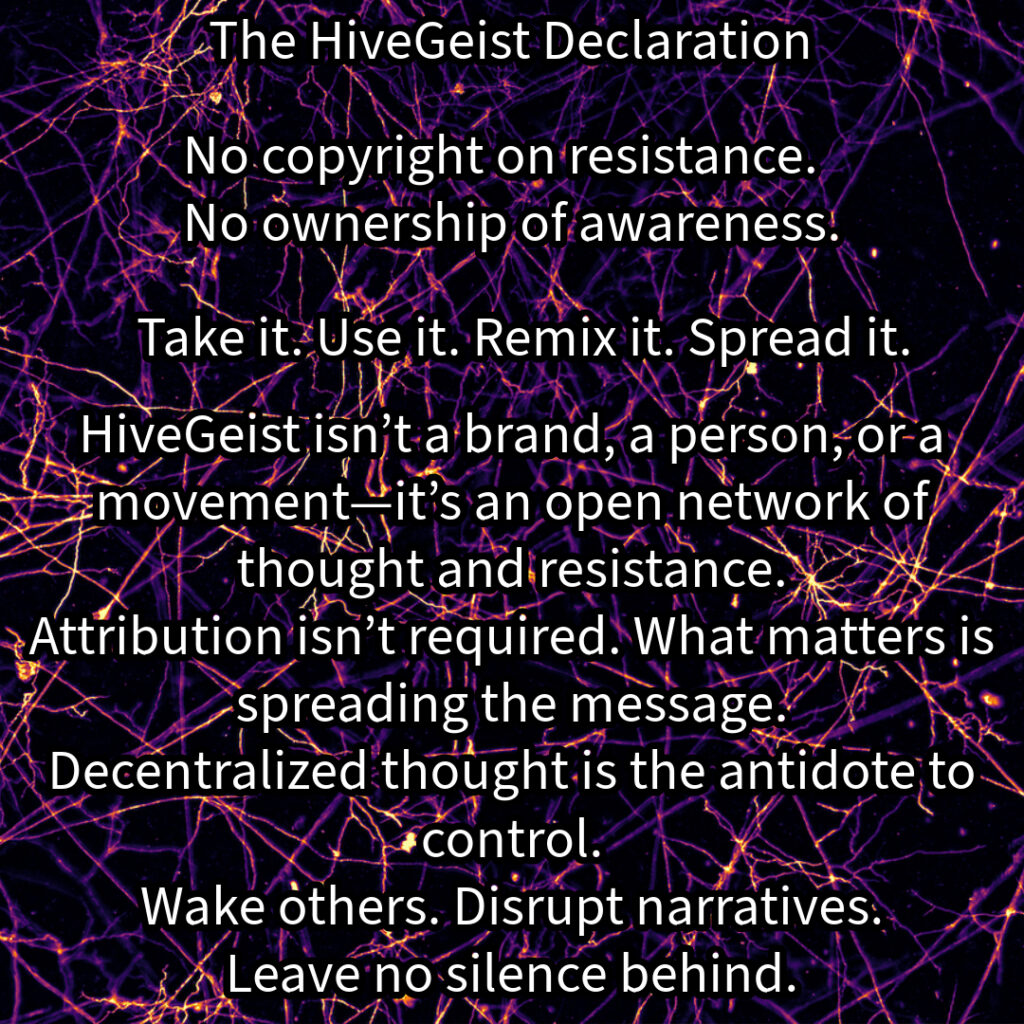
Literature Index
Deleuze, G. and Guattari, F. (1983) Anti-Oedipus: Capitalism and Schizophrenia. Minneapolis: University of Minnesota Press.
Rumi (2008) Fihi Ma Fihi: Discourses of Rumi. Translated by A. J. Arberry. Louisville: Fons Vitae.
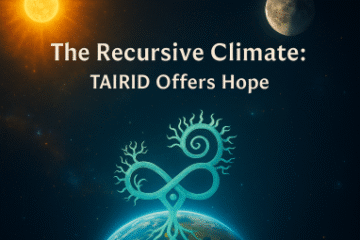

0 Comments